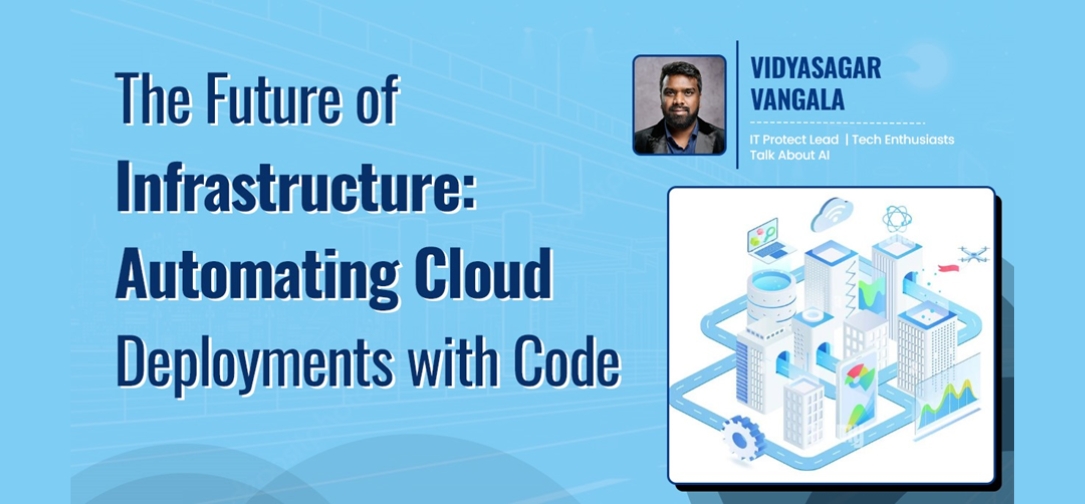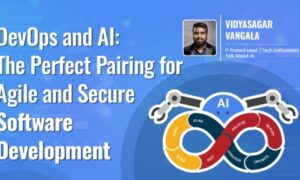New Delhi [India], February 05: The landscape of IT infrastructure is undergoing a dramatic transformation as organizations increasingly adopt cloud computing and automation technologies. The shift from traditional infrastructure management to automated cloud deployments has become essential for businesses seeking agility, scalability, and efficiency. By leveraging code to automate the provisioning, configuration, and management of cloud resources, organizations can streamline their operations and respond more rapidly to changing market demands. This article explores the evolution of infrastructure automation, its benefits, challenges, and future trends shaping the automation of cloud deployments.
Understanding Infrastructure Automation
What is Infrastructure Automation?
Infrastructure automation refers to the use of software tools and processes to automate the management and provisioning of IT infrastructure. This includes servers, networking, storage, and other components required to run applications and services. By automating these tasks, organizations can reduce manual intervention, minimize errors, and enhance operational efficiency.
Importance of Infrastructure Automation
- Increased Efficiency: Automation eliminates repetitive tasks, allowing IT teams to focus on higher-value activities that drive innovation.
- Consistency: Automated processes ensure that configurations are applied uniformly across all environments, reducing the risk of misconfigurations.
- Scalability: Organizations can scale their infrastructure rapidly in response to changing demands without the need for manual provisioning.
The Evolution of Infrastructure Automation
Early Approaches: Manual Configuration
In the early days of IT infrastructure management, provisioning and configuring resources were predominantly manual processes. IT teams would physically set up servers and configure network settings using command-line interfaces or graphical user interfaces. This approach was time-consuming and prone to human error.
The Advent of Virtualization
The introduction of virtualization technology revolutionized infrastructure management by allowing multiple virtual machines (VMs) to run on a single physical server. This innovation enabled more efficient resource utilization and simplified the deployment process.
Example: VMware’s virtualization solutions allowed organizations to create snapshots of VM configurations, making it easier to replicate environments for testing or disaster recovery.
Emergence of Infrastructure as Code (IaC)
The concept of Infrastructure as Code (IaC) marked a significant milestone in the evolution of infrastructure automation. IaC allows IT teams to define their infrastructure using code and configuration files rather than manual processes. This approach enables version control, repeatability, and easier collaboration among team members.
Example: Tools like Terraform enable users to define infrastructure resources in declarative configuration files, which can be versioned and reused across different projects.
Integration with DevOps Practices
The rise of DevOps practices further accelerated the adoption of infrastructure automation. By integrating development and operations teams, organizations could streamline workflows and improve collaboration throughout the software development lifecycle.
Example: Continuous Integration/Continuous Deployment (CI/CD) pipelines automate the deployment process by integrating automated testing and deployment scripts into a cohesive workflow.
Benefits of Automating Cloud Deployments
- Faster Time-to-Market
Automating cloud deployments allows organizations to provision resources quickly and efficiently. This speed enables faster application development cycles and quicker responses to market demands.
Example: Companies like Netflix utilize automated deployment pipelines that allow them to release new features multiple times a day without downtime.
- Cost Optimization
By automating resource provisioning and scaling based on demand, organizations can optimize their cloud spending. Automated systems can shut down unused resources during off-peak hours or scale up resources during high-demand periods.
Example: AWS Auto Scaling automatically adjusts EC2 instance capacity based on traffic patterns, ensuring cost-effective resource utilization.
- Enhanced Security Compliance
Automation helps enforce security policies consistently across cloud environments. By codifying security configurations within IaC templates, organizations can ensure compliance with industry standards and regulatory requirements.
Example: Using tools like AWS CloudFormation allows organizations to define security groups and IAM roles as part of their infrastructure codebase.
Challenges in Automating Cloud Deployments
- Complexity in Implementation
Implementing automation requires a clear understanding of existing infrastructure and workflows. Organizations may face challenges in integrating automation tools with legacy systems or disparate environments.
- Skill Gaps
The successful implementation of automated cloud deployments requires skilled personnel who understand both cloud technologies and automation practices. Organizations may struggle to find qualified professionals with expertise in this area.
- Security Risks
While automation enhances security compliance, it can also introduce vulnerabilities if not properly managed. Organizations must ensure that automated processes do not inadvertently expose sensitive data or configurations.
Real-World Applications of Automated Cloud Deployments
Example 1: E-Commerce Platforms
E-commerce companies leverage automated cloud deployments to handle fluctuating traffic during peak shopping seasons. By utilizing IaC tools like Terraform, they can quickly provision additional resources to accommodate increased demand without manual intervention.
Example 2: Financial Services
Financial institutions implement automated deployment pipelines for regulatory compliance purposes. By automating the configuration of security controls within their cloud environments, they ensure adherence to industry regulations while maintaining operational efficiency.
Example 3: SaaS Providers
Software as a Service (SaaS) providers utilize automated cloud deployments for continuous integration and delivery (CI/CD). By automating testing and deployment processes, they can release updates rapidly while minimizing downtime for users.
Future Trends in Automating Cloud Deployments
- Increased Adoption of AI-Powered Automation
The integration of artificial intelligence into automation tools will enhance decision-making capabilities by enabling predictive analytics that anticipates resource needs based on historical usage patterns.
- Greater Focus on Multi-Cloud Strategies
Organizations are increasingly adopting multi-cloud strategies that require seamless integration between different cloud providers. Automation tools will need to support interoperability across diverse environments while maintaining consistency in configurations.
- Enhanced Self-Service Capabilities
Future developments will likely emphasize self-service models for provisioning resources—allowing users across departments greater control over their cloud environments while reducing dependency on IT teams.
Conclusion
Automating cloud deployments represents a transformative shift in how organizations manage their IT infrastructure effectively while optimizing operational efficiency through streamlined processes driven by code-based configurations! With advancements in technologies such as IaC combined with emerging trends like AI-powered automation—businesses can navigate complexities associated with traditional approaches seamlessly while unlocking new opportunities for growth within increasingly competitive landscapes!
By embracing these innovations alongside addressing challenges related to implementation complexity or skill gaps—organizations will position themselves at the forefront within ever-evolving technological environments shaping futures ahead!
Author bio
Vidyasagar Vangala is an accomplished IT Project Lead with 10 + years of IT industry experience with a deep passion for technology and innovation. With extensive expertise in Cloud Technologies, AI Integration, and Automation, Vidyasagar has been at the forefront of driving transformative projects that deliver tangible business outcomes. His robust experience in DevOps engineering, cloud platforms like AWS and Azure, and Kubernetes showcases his ability to lead large-scale cloud migrations, develop AI-powered solutions, and implement advanced automation frameworks.
A strategic thinker and problem solver, Vidyasagar thrives on tackling complex challenges and delivering scalable, efficient solutions. His professional journey reflects a commitment to leveraging cutting-edge tools and methodologies to help organizations achieve agility and operational excellence. Whether it’s streamlining processes through DevOps practices or integrating AI to enhance business decision-making, Vidyasagar’s innovative mindset and leadership have consistently resulted in successful project deliveries.
For more updates visit his website https://vangala.me/
Presented by https://hashadv.in/



































